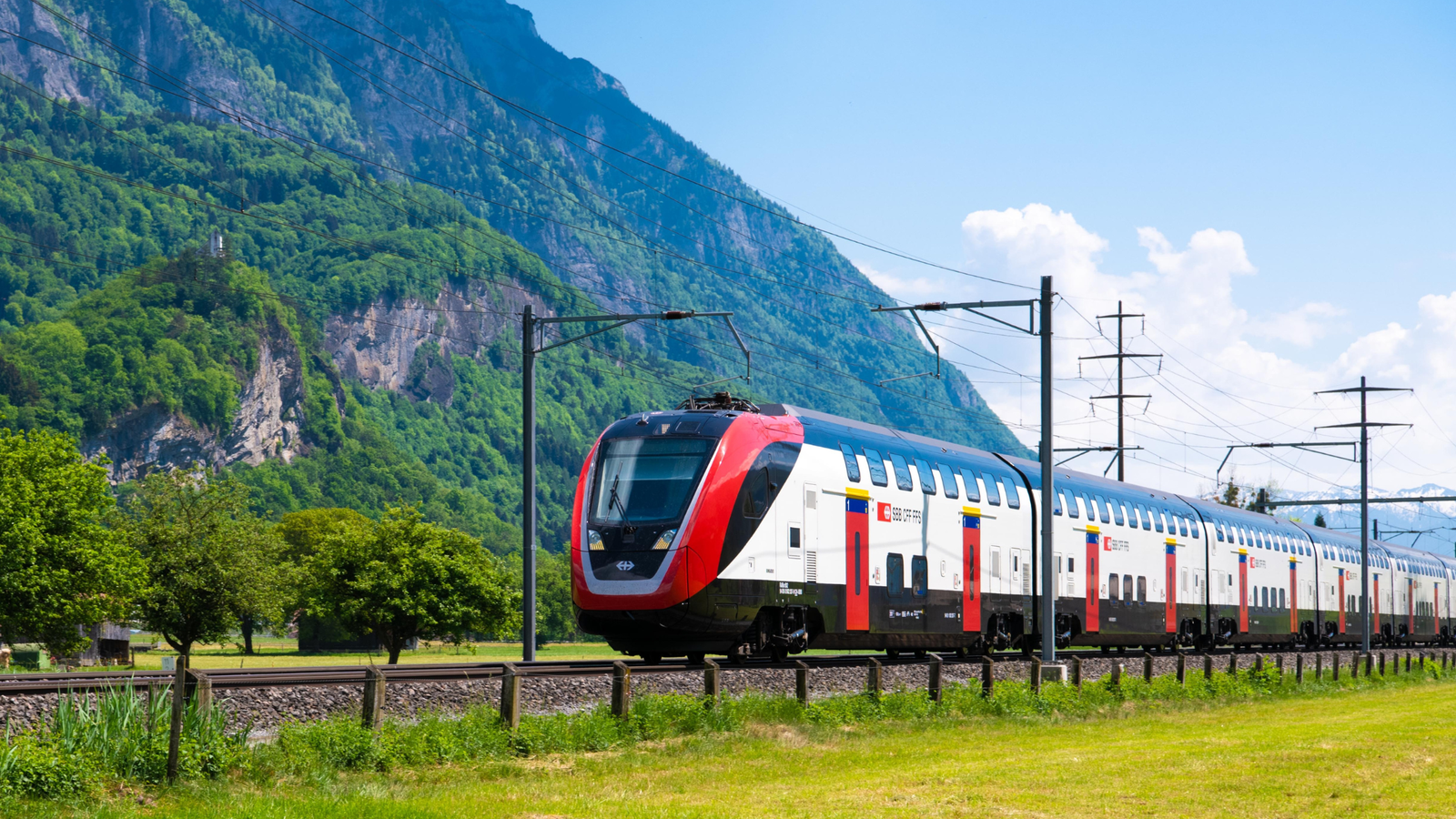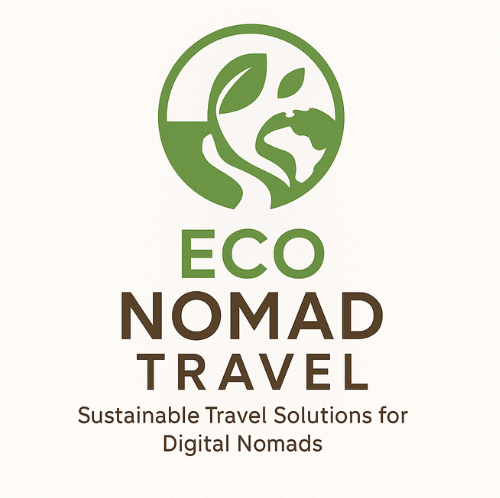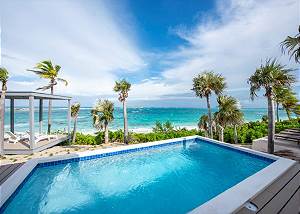
Off-Peak Eco Escapes: Season-Stretching Getaways in Europe (2025)
shoulder season rail-first travel eco nomads
Disclosure: Some links are affiliates (Trip.com, eSIMs, transfers). We may earn a commission at no extra cost to you. We recommend options aligned with low-impact travel.
In 2025, Europe is rewriting the travel calendar. Instead of flocking to the Mediterranean in July or alpine peaks in August, more travelers are stretching their seasons—planning getaways in May, June, September, October, and even into winter. A National Geographic survey revealed that 73% of Europeans intend to travel between October 2024 and March 2025. This signals a profound shift: travelers are chasing better weather, quieter towns, and more sustainable rhythms—while rail connectivity makes it easier than ever to explore without flying. For rail-first planning, pair this with our Night Trains 2025 and Train vs Plane Emissions guides.
Why Season-Stretching Travel Matters in 2025
Rising demand for May/June and Oct–March travel
Travel searches for shoulder-season months have overtaken July and August for the first time. Families are adjusting school calendars, digital nomads are free to roam, and retirees prefer spring and autumn comfort. This democratization of the travel year means fewer pressure points on destinations—and more joy for travelers.
Climate adaptation: avoiding extreme summer heat
Europe’s summers are hotter and less predictable. In 2023 and 2024, southern Spain, Greece, and Italy saw record-breaking temperatures, making midday sightseeing unbearable. Travelers in 2025 are planning around climate: exploring Andalusia in April, or visiting Athens in October instead of July.
Eco benefits of reducing peak-season pressure
Tourism overload is one of Europe’s biggest ecological challenges. Venice, Barcelona, and Dubrovnik are strained by July crowds. Season stretching redistributes visitors, providing year-round income while protecting fragile infrastructure. A steady flow of visitors is better than a flood followed by drought. See also our Sustainable Travel Tips and Low-Impact Travel Habits.
Defining Season-Stretching Travel
What shoulder seasons mean for Europe
“Shoulder season” traditionally refers to the months just before or after peak tourism. In Europe, this means April–June and September–November. With climate and economic shifts, even December–March is gaining momentum for destinations with cultural or winter appeal.
Distinction between low-season vs off-peak
Low season often implies closures, harsh weather, or limited services (think January in rural France). Off-peak or shoulder season, however, offers the sweet spot: businesses remain open, but crowds are thin, prices are lower, and experiences feel more authentic.
Benefits of Off-Peak Eco Escapes
Cooler, more comfortable weather
Walking through Rome in 30°C is delightful; at 42°C, it’s oppressive. Spring and autumn travel provide balance—warm enough for dining al fresco, cool enough for exploration.
Fewer crowds and calmer experiences
The Sistine Chapel in May feels vastly different than in August. Off-peak travel restores intimacy to cultural landmarks, from Gaudí’s Sagrada Família to Prague’s Charles Bridge.
Lower prices for accommodation and rail passes
Hotels, Airbnbs, and coworking spaces often drop prices by 20–40% outside peak summer. Rail passes also stretch further, with fewer blackout dates and better seat availability. Explore pass strategies in our Sleeper Booking Guide.
Local community resilience and year-round income
Season stretching ensures businesses aren’t forced into “feast or famine” cycles. A steady stream of nomads and travelers helps local cafés, guides, and small hotels stay open all year. Vet properties with our Sustainable Stays 2025: Avoid Greenwash.
Rail-Accessible Destinations for Spring 2025
Andalusia in bloom: Seville, Córdoba, Granada
Spring is the season when Andalusia bursts into life. Orange blossoms perfume Seville’s streets, Córdoba hosts its iconic Patio Festival in May, and Granada’s Alhambra glows against snow-dusted Sierra Nevada peaks. The AVE high-speed train links Madrid to all three cities in under three hours, making them easy to chain together for a rail adventure. Off-peak travel also means skipping the stifling July heat.
Provence lavender before peak crowds
Everyone dreams of Provence’s lavender fields, but visiting in late June or early July means facing clogged roads and sky-high hotel rates. By arriving in late May or early June, travelers catch the start of the bloom with cooler weather and fewer tour buses. Rail links via Marseille and Avignon (SNCF) make it easy to explore the region without a car. Pair it with our Eco-Friendly Travel Tips.
Northern Italy: Lake Como and Verona in May
Before summer yachts dominate Lake Como, May brings calm waters and quiet promenades. Verona, just an hour away by train, offers Shakespearean history and lively piazzas before the heat and cruise groups arrive. Italy’s regional trains keep fares affordable, and spring brings lower accommodation prices.
Rail-Accessible Destinations for Autumn 2025
Douro Valley harvest: Porto by train
Autumn in Portugal means grape harvest season. The Douro Valley, accessible by one of Europe’s most scenic train rides from Porto, is alive with vineyards and festivals. Off-peak rail passes make travel through Portugal inexpensive, and nomads can balance coworking in Porto with weekend vineyard escapes. See Workation Cities Without a Car.
Bavaria’s golden forests: Munich to Garmisch-Partenkirchen
Germany’s forests turn fiery red and gold by October. The train ride from Munich to Garmisch-Partenkirchen is short yet spectacular, leading travelers into alpine villages perfect for hiking or simply sipping beer by the fire. Oktoberfest may draw crowds to Munich, but Bavaria’s countryside offers calmer alternatives.
Greek shoulder gems: Thessaloniki and Halkidiki
By October, Athens and Santorini still see crowds, but northern Greece offers a quieter rhythm. Thessaloniki’s café culture thrives, while Halkidiki’s beaches remain swimmable well into autumn. Rail links from Sofia and Belgrade make Thessaloniki an underrated stop for east-to-south rail nomads.
Winter Escapes by Rail
Swiss Alps for skiing and digital workcations
Winter doesn’t mean hiding indoors—it means embracing snowy landscapes. Swiss rail lines reach Zermatt, Interlaken, and St. Moritz with clockwork precision. Many alpine towns now advertise themselves as “workcation hubs,” offering coworking spaces alongside ski slopes.
Budapest’s thermal baths as cold-weather sanctuaries
There are few pleasures more indulgent than soaking in Budapest’s thermal baths while snow drifts outside. Winter rail passes are cheaper, and Hungary’s central location makes Budapest a natural hub for winter rail chains through Vienna, Bratislava, and Prague. Browse our Sustainable Digital Nomad Lifestyle primer.
Canary Islands as Europe’s warm refuge
Though technically outside the European rail grid, the Canary Islands deserve mention. They remain one of the few sunny destinations for Europeans in January. Ferries from Cádiz or Huelva connect them indirectly to rail itineraries, allowing travelers to extend trips without flying.
Digital Nomad Bases for Off-Peak Stays
Coworking hubs thriving year-round (Lisbon, Athens, Barcelona)
Certain European cities have embraced digital nomads beyond summer. Lisbon’s coworking spaces stay lively in November, Athens offers mild winters with robust expat networks, and Barcelona balances affordability with connectivity outside peak season. See our city shortlists: 10 Eco-Friendly Digital Nomad Destinations and Top Sustainable Destinations.
Islands with mild winters (Madeira, Malta, Sicily)
Madeira is gaining fame as a “year-round nomad village,” where coworking meets hiking trails. Malta provides sun, English-speaking communities, and ferry connections, while Sicily’s winter is cool but not freezing—ideal for those who prefer Mediterranean slow living. Pack with our Zero-Waste Packing List 2025.
Sustainable Practices for Season-Stretching Travel
Supporting local economies in quiet months
Choosing to travel off-peak is itself a sustainable act. Spending in cafés, markets, and coworking spaces during low-demand months helps businesses survive. For islands and rural regions, year-round revenue prevents closures and unemployment.
Slow travel: longer stays, deeper immersion
The eco-logic of season stretching pairs with slow travel. Instead of a weeklong August blitz, nomads can stay three weeks in October, building routines with locals. Longer stays reduce transit emissions while enhancing cultural exchange.
Packing light but flexible for variable weather
Off-peak means unpredictable climates. A layering wardrobe is key: breathable fabrics for warm days, insulating layers for cool nights, and rain gear for sudden storms. Eco fabrics like merino wool reduce washing needs, cutting both luggage weight and energy use. Build your kit with our Eco-Friendly Travel Kit 2025 and Reef-Safe Sunscreen Guide.
Case Studies: Multi-Stop Off-Peak Rail Itineraries
Paris → Lyon → Provence in April
Start with spring blossoms in Paris, then hop a TGV to Lyon for its food culture before riding south into Provence just as lavender season begins. All rail, no crowds.
Vienna → Budapest → Zagreb in October
Autumn colors frame this central European chain. Vienna’s coffeehouses, Budapest’s baths, and Zagreb’s markets offer a cultural trio at a fraction of summer costs.
Berlin → Prague → Kraków in December
Christmas markets light up this route, each city offering a different festive tradition. Regional trains make the connections affordable, while off-peak passes lower overall expenses.
Booking Strategies in 2025
How to find cheaper rail passes and accommodations
Season stretching aligns perfectly with rail discounts. Interrail and Eurail often release off-peak specials in spring and autumn, while hotels slash prices by up to 40% once peak season ends. Use Trip.com to compare station-side stays.
Using night trains to extend journeys affordably
Night trains combine accommodation and travel, saving budget and daylight. Routes like Paris–Vienna or Berlin–Budapest become even more appealing in low season when tickets are easier to secure. Read: How to Book European Sleeper Trains (2025) and Night Trains in Europe 2025.
Flexibility as a secret weapon for off-peak deals
Travelers willing to shift by a day or two often score last-minute discounts. Apps now highlight “green windows” with the lowest emissions and lowest fares, making planning smarter and more sustainable. Keep data stable with an eSIM; for late arrivals, pre-book a Welcome Pickups transfer.
The Human Side of Season-Stretching Travel
Reclaiming Space in Iconic Destinations
Travelers often talk about being “alone with history.” That feeling is rare in peak months, when the Colosseum or Sagrada Família can feel more like an amusement park than a cultural treasure. In April or October, however, travelers rediscover intimacy with landmarks. A quiet morning walk across Charles Bridge in Prague or a nearly empty tour of Florence’s Uffizi Gallery reveals these icons in their intended scale—spaces for contemplation rather than queues.
Authenticity in Everyday Life
Off-peak travel peels back the layers of tourism. When the tour buses are gone, locals reclaim their cities. Cafés in Paris fill with neighbors rather than Instagrammers, and in Porto, market vendors have time to chat rather than rush transactions. Season stretching restores a balance between visitor and resident, allowing travelers to blend into daily rhythms rather than floating atop them.
Seasonal Food and Cultural Traditions
European seasons bring culinary treasures often missed by summer visitors. In autumn, truffle festivals unfold in northern Italy, German villages host harvest fairs, and Portugal’s vinho verde vineyards open their doors. Winter markets in Central Europe turn town squares into lantern-lit gatherings of mulled wine and local crafts. For nomads, these off-peak festivals are both cultural immersion and a chance to live as a seasonal local.
Community Connection and Longer Stays
Because off-peak travel often means slower movement, it naturally fosters deeper ties. Nomads staying in Thessaloniki in October might join a language exchange at a café. A writer in Madeira during February could attend a neighborhood carnival. Unlike peak months, when hosts and locals are stretched thin, off-peak seasons open up more space for genuine friendships and cultural exchanges.
Wellness Through Climate Balance
Extreme summer heat is draining—not just physically but mentally. In contrast, shoulder-season climates support wellness. Cooler air makes hiking trails in Slovenia or Croatia more accessible, while mild Mediterranean breezes in spring or autumn encourage walking rather than retreating indoors. Off-peak travel helps align human rhythms with natural ones, giving nomads healthier daily routines.
Slower Transit, Deeper Journeys
The off-peak rhythm extends to travel itself. Trains are less crowded, ferry decks quieter, and buses more relaxed. Instead of squeezing into packed summer trains, travelers in November can spread out, read, and watch landscapes roll by. This slower, calmer mode of travel creates mental space to reflect, write, or simply rest—turning journeys into restorative pauses rather than logistical headaches.
The Ethical Edge of Season Stretching
Finally, there’s an ethical satisfaction in traveling differently. Over-tourism damages fragile communities, from Venice’s canals to Santorini’s cliffs. By choosing April instead of August, or November instead of July, eco nomads and mindful travelers participate in a redistribution of demand. This doesn’t just lighten the burden on locals—it sustains year-round employment for guides, baristas, musicians, and small business owners who might otherwise face seasonal shutdowns.
Packing Guidance for Shoulder Seasons
Layering for Unpredictable Climates
The biggest challenge of shoulder-season travel is variability. In one week you might experience sunbathing temperatures, brisk winds, and unexpected rainstorms. A smart layering system is essential. Start with breathable base layers (merino wool is the eco-friendly favorite), add a fleece or insulated mid-layer, and finish with a lightweight waterproof jacket. This combination covers everything from Paris in April to Athens in November.
Footwear for Mixed Conditions
Travelers often underestimate footwear. Summer sandals won’t cut it in shoulder seasons, when cobblestones might be slick with rain or frost. A pair of sturdy walking shoes, ideally waterproof, balances city sightseeing with light hiking. For nomads, a single versatile pair often beats packing three.
Tech and Digital Essentials
Working nomads must prepare for fluctuating Wi-Fi and power access. Carry a reliable power bank, universal adapter, and lightweight laptop stand. An eSIM card with pan-European coverage (like Airalo) ensures connectivity even when local networks struggle. For trains and ferries, offline productivity apps (Notion, Google Docs offline, or coding IDEs) turn “dead zones” into work sprints.
Sustainable Gear: Reusables and Eco Fabrics
Off-peak travelers are often eco-minded. Packing a reusable bottle, coffee cup, and cutlery reduces single-use waste. Clothing made of recycled polyester or organic cotton lightens the ecological load. Many nomads now swear by compact travel laundry kits, allowing them to wash clothing in accommodations rather than relying on energy-heavy laundromats.
Challenges of Season-Stretching Travel
Reduced Services in Rural Areas
Off-peak means quieter towns, but it can also mean fewer buses, limited ferry schedules, or early restaurant closures. In coastal France or rural Croatia, bus services may drop to a skeleton timetable after September. Nomads must plan ahead, checking transport schedules and confirming coworking availability before arrival.
Weather Unpredictability and Storm Risks
Spring rains and autumn storms are part of the deal. Ferries may be canceled due to rough seas, and outdoor plans can be derailed by sudden downpours. Flexibility is the antidote: always have an indoor backup activity (museums, cafés, coworking spaces) ready to swap in.
Cultural Calendars and Off-Peak Closures
Not every festival or attraction runs year-round. Some Mediterranean islands effectively shut down after October, with seasonal hotels and cafés closed until spring. However, this can also create unique opportunities: staying in Crete in February may mean fewer open restaurants but richer connections with locals who have time to chat.
Future of Season-Stretching Travel Beyond 2025
The Shift Toward Climate-Smart Itineraries
By 2025, climate-driven planning is mainstream. Travelers aren’t just avoiding heat—they’re actively seeking destinations that thrive in shoulder seasons. Northern Europe is seeing longer spring and autumn tourism seasons, while southern regions adapt with infrastructure to handle travelers year-round.
Role of Rail and Ferries in Year-Round Mobility
Europe’s expanding rail network supports season stretching. Night trains from Paris to Vienna, Berlin to Brussels, and new routes into the Balkans make winter rail adventures practical. Ferries, too, are adapting, with operators offering winter schedules for islands that once closed entirely. EU transport policy overview: European Commission — Transport.
New Digital Nomad Visas and Workcation Policies
Governments are waking up to off-peak nomadism. Spain, Portugal, and Croatia already offer digital nomad visas; more countries are experimenting with policies to encourage long-term, off-season stays. Expect incentives—like tax breaks, coworking support, or subsidized housing—to keep towns alive outside peak months.
FAQs on Season-Stretching Travel 2025
Q1: Is season stretching cheaper than peak-season travel?
Yes. Flights, trains, and accommodations are generally 20–50% cheaper outside July–August. Rail passes in spring and autumn often come with discounts or added flexibility.
Q2: Which months are considered “season stretching” in Europe?
April–June and September–November are the prime months. Increasingly, December–March is also included for cultural cities, winter sports, and southern island escapes.
Q3: Can I still find coworking spaces in off-peak months?
Absolutely. Major cities (Lisbon, Berlin, Barcelona) and growing hubs (Madeira, Thessaloniki, Porto) maintain year-round coworking communities. Smaller towns may close seasonal spaces, so research before arrival.
Q4: Is shoulder-season weather reliable enough?
It varies. Southern Europe often enjoys sunshine well into October, while northern Europe may see rainier springs. Pack layers and embrace flexibility.
Q5: How do I handle reduced transport schedules?
Check seasonal timetables on apps like Omio or DB Navigator. Booking regional trains or ferries a few days in advance ensures you don’t get stranded. Renting e-bikes or scooters can fill gaps in rural areas.
Q6: What are the best rail itineraries for off-peak 2025?
Spring: Paris → Lyon → Marseille → Avignon. Autumn: Berlin → Vienna → Budapest → Zagreb. Winter: Zurich → Milan → Rome → Palermo (with ferry extension to Malta).
Conclusion: Embracing the New Rhythm of Travel
Season stretching travel in 2025 is more than a trend—it’s a rebalancing of Europe’s entire travel ecosystem. By moving away from the July–August crush, travelers gain cooler weather, emptier streets, and cheaper prices. Locals benefit from steady income throughout the year, while the environment breathes easier without the summer spikes of tourism.
For digital nomads and eco-conscious adventurers, shoulder seasons aren’t just practical—they’re transformational. Off-peak escapes create space for real conversations with locals, immersion in seasonal food and traditions, and a healthier relationship with both climate and culture.
In a Europe reshaped by climate change, season stretching is the sustainable path forward. It rewards curiosity, flexibility, and respect for place. The future traveler won’t ask, “When is peak season?” but rather, “When will this place truly breathe?”
Plan Your Off-Peak Europe Escape
Extend your adventure with these trusted resources, interactive tools, and guides to sustainable shoulder-season travel.
Related Guides from Eco Nomad Travel
- Night Trains in Europe 2025
- Top Sustainable Digital Nomad Destinations
- Low-Impact Travel Habits
- Sustainable Travel Tips
- Green Travel Guide 2025
- Zero-Waste Packing List 2025
- Train vs Plane Emissions 2025
- Best Workation Cities Without a Car
- Book European Sleeper Trains 2025
Trusted Sources & Useful Tools
- Seat61 Rail Planning
- Interrail Europe
- EU Climate & Tourism Data
- Lonely Planet Shoulder-Season Insights
Interactive Map: Compare Rail & Flight Deals
Zoom and drag to explore current low-season routes and prices. Perfect for planning rail-first itineraries with optional flight connections.
Disclosure: Some links below are affiliate links. We may earn a commission at no extra cost to you.


